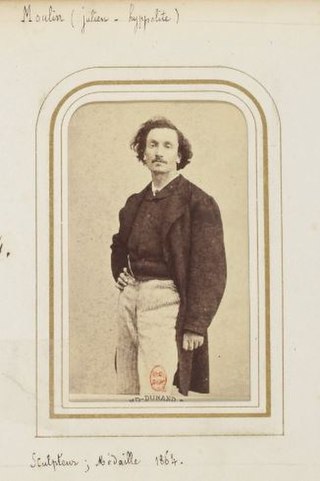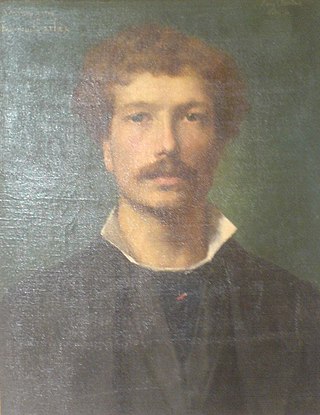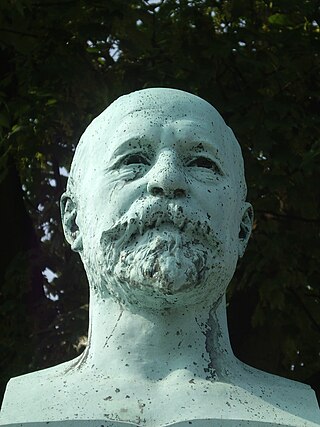
Jean-Léon Gérôme was a French painter and sculptor in the style now known as academicism. His paintings were so widely reproduced that he was "arguably the world's most famous living artist by 1880." The range of his oeuvre included historical painting, Greek mythology, Orientalism, portraits, and other subjects, bringing the academic painting tradition to an artistic climax. He is considered one of the most important painters from this academic period. He was also a teacher with a long list of students.

Jean Alexandre Joseph Falguière was a French sculptor and painter.

Hippolyte Alexandre Julien Moulin, sometimes given as Julien-Hippolyte Moulin or Hypolite Moulin, (1832–1884) was a 19th-century French sculptor.

Louis-Ernest Barrias was a French sculptor of the Beaux-Arts school. In 1865 Barrias won the Prix de Rome for study at the French Academy in Rome.

François Pompon was a French sculptor and animalier. Pompon made his Salon debut in 1879, exhibiting a statue of Victor Hugo's Cosette. He was a pioneer of modern stylized animalier sculpture. He was not fully recognized for his artistic accomplishments until the age of 67 at the Salon d'Automne of 1922 with the work Ours blanc. Pompon died in Paris, France, on 6 May 1933.

Laurent-Honoré Marqueste was a French sculptor in the neo-Baroque Beaux-Arts tradition. He was a pupil of François Jouffroy and of Alexandre Falguière. Marqueste won the Prix de Rome in 1871.

Charles-François Lebœuf, called Nanteuil was a French sculptor.

Jean-Joseph Espercieux was a French sculptor.

Jean-Baptiste Auguste Clésinger was a 19th-century French sculptor and painter.

Jean-Antonin Carles was a French sculptor.

Jean-Baptiste Hugues was a French sculptor.

Émile Nestor Joseph Carlier, called Joseph Carlier, was a French sculptor.

Charles Gauthier was a French sculptor who was made a Chevalier of the Légion d'Honneur in 1872.

André-César Vermare was a French sculptor, known for his war memorials and monuments.

Onésime-Aristide Croisy was a French sculptor. He is known for his dramatic bronze military statues, but perhaps best known for his marble Le Nid, showing two children asleep in an armchair.

Sakuntala, also known as Sakountala or Çacountala, is a sculpture by the French artist Camille Claudel, made in several versions in different media from 1886, with a marble version completed in 1905, and bronze castings made from 1905. The sculpture depicts a young couple, with a kneeling man embracing a woman leaning towards him. It was named after the play Shakuntala by the 4th-5th century Indian poet Kālidāsa, and is inspired by the moment when the title character Shakuntala is reunited with her husband Dushyanta after a long separation.
Jules-Isidore Lafrance was a French sculptor.

Tanagra is a polychromic marble sculpture created by French artist Jean-Léon Gérôme (1824-1904) as a personification of the "spirit of Tanagra," his own mythic invention tied to the Tanagra figurines from the village of that name in ancient Greece. The sculpture was first shown at the Paris Salon of 1890. Gérôme subsequently created smaller, gilded bronze versions of Tanagra; several versions of the "Hoop Dancer" figurine held by Tanagra; two paintings of an imaginary ancient Tanagra workshop; and two self-portraits of himself sculpting Tanagra from a living model in his Paris atelier. These sculptures and paintings comprise a complex, self-referential artistic program in which one of the most celebrated artists of his generation explored reception of Classical antiquity, creative inspiration, doppelgängers, and female beauty.
Louis Castex was a French sculptor.
This page is based on this
Wikipedia article Text is available under the
CC BY-SA 4.0 license; additional terms may apply.
Images, videos and audio are available under their respective licenses.

















